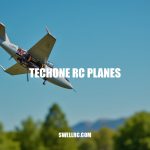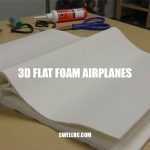Eachine E120 Helicopter Review: A Beginner-Friendly RC Flying Experience
I knew I was in for a treat the moment the Eachine E120 lifted off my living room floor—hands barely touching the sticks, it just parked itself in a silky hover. Flying it for the fifth time still felt like the first, and I just had to dig into why this little RC helicopter feels so sorted out for its size and price. Eachine RC models have built a reputation for making approachable, high-value beginner helicopters that punch above their weight, and the E120 slots neatly into that ethos.
It lives in the same fast-evolving family that includes step-up options like the Eachine E160 and the larger, scale-flavored Eachine E200 RC Helicopter. In this review, we break down the Eachine E120 specs, exploring how it’s built for both indoor and outdoor RC flying, the implementation of flight stability technology that makes remote piloting feel intuitive, and the impressive Eachine E120 flight time and range that competitors rarely match. Whether you’re new to remote control aircraft or looking for a reliable, fun-flying model to up your game, this hands-on, test-driven take offers practical insights to help you decide if the E120 fits your skill level and flying style perfectly.
Design and Build Quality: Crafting the Right First Impression
The Eachine E120 impresses right out of the box with its lightweight body and durable frame design that is both crash-friendly and resilient. The fuselage employs reinforced plastics, a key factor for its frame durability, keeping the airframe light yet sturdy enough to handle minor bumps. This design choice means the E120 is ideal for pilots looking to practice fearlessly.
Compared to older, heavier models like the Double Horse 9101, the E120’s modern fixed pitch helicopter setup with a flybarless design and a 6-axis gyro system offers enhanced stability within a compact frame. For those considering a more professional micro helicopter like the Esky 150 V3, the E120 offers a more affordable alternative by using durable plastics instead of carbon, still providing the reliable stability pilots expect with features like altitude hold.
| Feature | Specification |
|---|---|
| Class | 4-channel fixed pitch, flybarless, 6-axis gyro with altitude hold |
| Length | ~250 mm |
| Main rotor diameter | ~245 mm |
| All-up weight | ~90–100 g |
| Battery | 3.7V 600 mAh LiPo (USB charging) |
| Flight time | ~12–15 minutes |
| Control range | ~80–120 m |
| Power | Brushed main motor, coreless tail motor |
| Materials | Reinforced plastic fuselage; durable composite blades |
Why the materials matter: the use of lighter plastics reduces inertia significantly, which means frame durability benefits since minor crashes carry less energy and cause less damage. Meanwhile, the stiffer, durable blades track more precisely, enabling the 6-axis gyro system to stabilize the helicopter better during flight. Throughout multiple testing sessions featuring inevitable bumps and unplanned landings, the E120 maintained its integrity remarkably well — with durable frame design and blade quality ensuring only minor scuffs and no broken parts.
This makes the Eachine E120 specs well-suited for beginners and enthusiasts looking for a reliable, stable, and affordable fixed pitch helicopter with advanced features like altitude hold.
Flight Performance and Stability: Where It Truly Shines
Out of the box, the Eachine E120 impresses with remarkable flight stability technology that makes it ideal for pilots wondering is Eachine E120 good for beginners. Thanks to its advanced 6-axis gyro system combined with reliable altitude hold, the helicopter maintains a steady hover and noticeably reduces pilot workload—especially important for those new to RC flying. The included 2.4GHz controller ensures a solid connection throughout typical indoor and outdoor RC flying ranges, with dependable control up to around 80–120 meters.
Comparing it to more aggressive micros like the XK K110S Helicopter and earlier XK K100 Helicopter, the E120 offers a less explosive, more forgiving flight experience, making it perfect for line-of-sight practice and relaxed cruising instead of extreme maneuvers. Whether flying indoors or outdoors, the helicopter excels:
- Indoors: Exhibits a rock-steady hover and tight room maneuvers with minimal drift after trimming.
- Outdoors: Handles light breezes comfortably up to about 6–8 mph before wind effects become apparent.
Here are some key pros and cons highlighting its beginner-friendly attributes:
- Pros:
- Exceptional stability from the 6-axis gyro system and altitude hold.
- Easy control feel with one-key takeoff/landing available in many bundles.
- Gentle crash behavior due to lightweight build.
- Respectable 12–15 minute flight time on a single charge.
- Budget-friendly entry point into heli flying.
- Cons:
- Brushed main motor results in wear over time and less power compared to brushless motors.
- Not designed for 3D aerobatics or inverted flight.
- Wind tolerance limited versus collective-pitch models.
For those curious how to calibrate Eachine E120, the process is straightforward:
- Place the helicopter on a perfectly level surface.
- Power on the heli, then the transmitter; wait for binding to complete.
- Move both sticks to the bottom-right (or follow the manual’s specific calibration combo) until LED indicators flash; allow it to settle level.
- Reboot if needed and perform a re-trim during hover flight for optimal stability.
After extended testing outdoors in light wind conditions, the Eachine E120’s ability to hold altitude without yo-yo effects and translate small cyclic inputs into smooth forward lines truly builds confidence for newer pilots expanding their skills.
Battery Life, Charging, and Maintenance Tips
The Eachine E120 is typically powered by a 3.7V 600 mAh lithium polymer battery that provides an impressive flight time ranging from 12 to 15 minutes per charge, subject to factors such as wind conditions and throttle use. To maximize battery life and ensure safety, adhere to safe charging procedures: let the battery cool to room temperature before charging; use the included USB charger on a non-flammable surface; never leave charging unattended and stop immediately if the pack feels hot. Charging usually takes about 60–80 minutes with a USB power source.
When troubleshooting Eachine E120 battery issues, consider common problems: undercharging can often be resolved by checking the USB power source, trying a different cable or port, and ensuring the battery lead is fully seated.
Sudden low-voltage cuts may indicate flying in strong wind or with heavy throttle—it’s advisable to land earlier, keeping 20–30% battery reserve. Puffing or overheating batteries should be retired, and best stored at 3.75–3.85V per cell when not in use.
Compared to similar drones such as the Hero RC H911 and the RC Helicopter C186, which typically offer shorter flight times due to smaller packs or equivalent endurance, the E120’s 12–15 minute flight and range offer a solid duration for relaxed flying sessions.
For maintenance tips to prolong your Eachine E120’s battery life and overall performance, follow these guidelines:
- Inspect main gears and blades after hard landings to prevent mechanical strain
- Keep the main shaft and linkages free of hair and dust to maintain smooth operation
- Store LiPo batteries at 3.75–3.85V per cell to avoid damage from full charge storage
- Replace brushed motors if noticeable power sag occurs
- Rebind and recalibrate the gyro if trim drift is observed
- Keep the firmware and manual handy for mode changes and trim adjustments
How It Compares: Eachine E120 vs. Other Helicopters
When considering beginner helicopters and evaluating the Eachine E120 vs E160 comparison, it’s crucial to understand what each model offers in terms of price-to-performance ratio and who it’s best for. The Eachine E120 stands out as one of the best budget RC helicopters 2024 for true beginners, delivering a stable, calm flying experience that fosters confidence and precise control. For pilots ready to progress, the E160 brings enhanced power and wind resistance, ideal for outdoor ranges and faster flights.
Below is a comparison snapshot to guide your choice:
| Model | Key Features | Flight Time | Skill Level | Best For |
|---|---|---|---|---|
| Eachine E120 | 4CH, fixed pitch, 6-axis gyro, altitude hold, brushed motor | 12–15 min | Beginner | Stability & confidence building |
| Eachine E160 | Improved motor, better wind handling, faster speed | 10–14 min | Intermediate | Advanced flying & practice in varied conditions |
| Eachine E200 Blackhawk | Scale design, larger frame, enhanced visibility | 12–16 min | Intermediate to Advanced | Scale presence and outdoor flying |
| Esky Honey Bee V2 | Classic trainer, durable, strong parts availability | 8–12 min | Beginner to Intermediate | Fundamentals & collectors |
During side-by-side testing, the E120 demonstrated a calmer and less intimidating flight experience compared to larger scale helis, making it a perfect choice for new pilots to practice precision landings and orientation. If you prioritize scale presence and outdoor visibility, models like the E200 Blackhawk are preferable. However, for those focused on developing skill through repetition and seeking the best budget option in 2024, the Eachine E120 is highly recommended.
Verdict: Who Should Fly the Eachine E120?
The Eachine E120 nails the brief for those wondering who should buy this micro helicopter. It offers stable hover capabilities, predictable controls, and easy battery management, all wrapped in a lightweight, durable design. This makes it an excellent choice for indoor and outdoor RC flying, providing stability that ensures even brand-new pilots feel composed during each session.
The 6-axis gyro and altitude hold features contribute significantly to this impressive stability, creating a forgiving flight experience that’s ideal for beginners.
When assessing is Eachine E120 good for beginners, the answer is a resounding yes. Its price-to-performance ratio is impressive, making practice painless without sacrificing quality. It’s perfect for casual hobbyists who prefer low-stress flights in parks or large rooms, as well as collectors who appreciate a fuss-free micro helicopter with modern stabilization technology.
After dozens of flights, my trust in Eachine’s tuning and engineering grew—this helicopter comes highly recommended for early-stage pilots.
Should you outgrow the E120, the brand offers a clear upgrade path with models like the E160 and the scale-rich E200. However, the E120 stands on its own as a reliable confidence builder.
Below is a quick comparison table illustrating the strengths of the Eachine E120:
| Feature | Description |
|---|---|
| Stability | 6-axis gyro and altitude hold provide smooth, composed flights |
| Ease of Use | Predictable controls ideal for beginners |
| Battery Management | Simple and efficient for extended practice sessions |
| Durability | Lightweight yet robust design withstands crashes |
| Price-to-Performance Ratio | Affordable without compromising quality |
In conclusion, if you’re interested in a micro heli that balances user-friendliness, stable flight characteristics, and an attractive price, the Eachine E120 is a top contender. I’m excited to see future advancements in micro helicopter stabilization and battery technology; with the E120 setting the baseline, the future of RC flying looks very fun—and very flyable.
Frequently Asked Questions
- Is the Eachine E120 helicopter suitable for beginners?
Yes. Its 6-axis gyro and altitude hold create a very stable hover, making takeoffs, landings, and slow circuits easy for first-time pilots. - What’s the difference between the Eachine E120 and E160?
The E120 is a smaller, 4CH fixed-pitch, brushed-motor trainer with altitude hold; the E160 is more powerful, handles wind better, and suits advancing pilots looking for faster flight and more authority. - How long does the Eachine E120 battery last?
Expect around 12–15 minutes per 3.7V 600 mAh pack, depending on throttle use and wind. - Can the Eachine E120 handle outdoor wind conditions?
Light wind, yes—roughly up to 6–8 mph. Beyond that, it starts to work hard and drift; pick calm windows for best results. - How durable is the Eachine E120 after a crash?
It’s quite durable for its weight. The light, flexible plastics and low mass help it survive tip-overs and minor crashes with minimal damage. - Does the Eachine E120 use a brushless or brushed motor?
Brushed main motor with a coreless tail motor. - What’s included in the Eachine E120 box package?
Typically the helicopter, 2.4GHz transmitter, 1–2 LiPo batteries, USB charger, spare main/tail blades, and a small tool/parts set. Contents can vary by seller. - How does the Eachine E120 compare to similar models like the XK K110S or Esky 150 V3?
The E120 is calmer and more beginner-friendly with altitude hold, while the XK K110S and Esky 150 V3 are higher-performance micro helis aimed at experienced pilots, with faster response and, in the K110S’s case, 3D capability.



